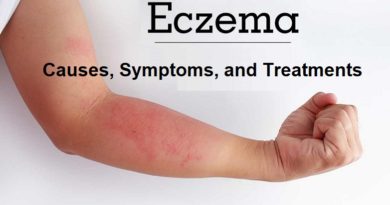Respiratory Infections During Flood Season: How to Protect Your Lungs
Introduction
A spike in respiratory infections is common the rainy season with flood in the Philippines. When floodwaters rise, people encounter damp environments with poor air quality. These conditions are found in overcrowded evacuation centers, creating the perfect atmosphere for infections to spread.
Respiratory infections during flood season can vary from simple colds and coughs to more serious diseases. These include pneumonia, bronchitis, and leptospirosis-related lung problems. If left untreated, these illnesses can become life-threatening, especially for children, and those with weak immune systems.
In this article, we’ll discuss the common respiratory diseases linked to flooding. We will also cover their symptoms, prevention, and treatment. Finally, learn how you can protect your lungs during the flood season in the Philippines.
Why Floods Increase the Risk of Respiratory Infections
Floods create environments where bacteria, viruses, and mold thrive. After heavy rains:
- Evacuation centers become crowded and poorly ventilated.
- Mold and mildew grow inside damp homes and buildings.
- Air pollution increases from waste, mud, and debris.
- People wade through contaminated floodwater, weakening the immune system.
These factors make respiratory infections more common and harder to control. Children often catch coughs and colds easily. Older adults and those with asthma or chronic lung disease face a higher risk of complications.
1. Common Respiratory Infections During the Flood Season
a. Common Cold and Flu
The common cold and influenza (flu) spread easily in crowded shelters and during cold, damp weather. They are caused by viruses that infect the upper respiratory tract.
Symptoms:
- Cough and sore throat
- Runny or stuffy nose
- Fever or chills
- Headache and body pain
Prevention Tips:
- Wear a mask in crowded places.
- Get enough sleep and nutrition to boost immunity.
- Wash hands regularly with soap and clean water.
- Get a flu vaccine, especially before the rainy season.
b. Pneumonia
It is a serious infection that causes inflammation in the lungs, making breathing difficult. It can be viral or bacterial. Prolonged exposure to cold, wet conditions often triggers it. This is common after floods.
Symptoms:
- Persistent cough (with or without phlegm)
- Shortness of breath
- High fever and chills
- Chest pain when breathing
Prevention Tips:
- Avoid staying long in wet or cold areas.
- Dry clothes and bedding thoroughly after exposure to rain or floodwater.
- Stay hydrated and eat nutritious foods.
- Seek medical care for persistent cough or fever.
Treatment:
Pneumonia needs medical attention and antibiotics or hospital care. Consult a healthcare provider if symptoms worsen.
c. Asthma and Allergic Reactions
Flooding increases mold growth in homes and buildings. Inhaling mold spores can trigger asthma attacks and allergic reactions, especially in sensitive individuals.
Symptoms:
- Wheezing and shortness of breath
- Coughing, especially at night
- Chest tightness
- Sneezing and nasal congestion
Prevention Tips:
- Keep homes dry and well-ventilated.
- Remove mold by cleaning with bleach and water.
- Wear a mask when cleaning flooded areas.
- Use prescribed inhalers or allergy medications regularly.
d. Leptospirosis-Related Lung Infections
Many Filipinos are familiar with leptospirosis, a bacterial disease caused by exposure to contaminated floodwater. In severe cases, it can affect the lungs and lead to pulmonary hemorrhage (bleeding in the lungs).
Symptoms:
- High fever
- Cough with blood-tinged sputum
- Chest pain and difficulty breathing
- Yellowing of the eyes or skin (jaundice)
Prevention Tips:
- Avoid wading in floodwater if possible.
- Wear protective boots and gloves when cleaning flooded areas.
- Wash thoroughly with soap after exposure.
- Seek immediate medical help if fever develops after flood exposure.
2. How Flood Conditions Worsen Lung Health
Flood conditions weaken the body’s defenses and irritate the lungs through:
- Cold and damp air that lowers immune response
- Exposure to smoke from burning debris
- Dust and dirt particles from post-flood cleanup
- Indoor mold spores that can inflame airways
Without proper protection, these factors can trigger respiratory infections and worsen existing conditions like asthma or bronchitis.
3. How to Protect Your Lungs During the Flood Season
Here are some essential tips to keep your respiratory system healthy during and after floods:
🏠 Keep Indoor Air Clean
- Open windows for ventilation once the rain stops.
- Use fans or dehumidifiers to dry damp areas.
- Dispose of soaked carpets, mattresses, or furniture that can grow mold.
😷 Practice Good Hygiene
- Wash hands with soap and water.
- Cover your mouth when coughing or sneezing.
- Disinfect touched objects (doorknobs, utensils, etc.).
🧴 Strengthen Immunity
- Eat immune-boosting foods rich in Vitamin C, zinc, and protein.
- Get adequate rest and hydration.
- Avoid smoking or inhaling secondhand smoke.
💉 Get Vaccinated
- The flu vaccine and pneumococcal vaccine are available at most health centers.
- Vaccination helps reduce the risk of severe infection, especially for children and low immunity persons.
4. Community and Government Response
The Department of Health (DOH) and local government units (LGUs) in the Philippines are active. They monitor and respond to flood-related respiratory illnesses.
Their efforts include:
- Medical missions and mobile clinics in evacuation areas
- Distribution of face masks and hygiene kits
- Vaccination programs for flu and pneumonia
- Public health advisories on respiratory care
You can check updates and health warnings from:
5. When to See a Doctor
Seek immediate medical attention if you or a family member experience:
- Persistent cough lasting more than 10 days
- Difficulty breathing or chest pain
- High fever that doesn’t go away
- Coughing up blood or thick yellow mucus
Early diagnosis and treatment prevent complications and protect your family’s health during the flood season.
Conclusion: Stay Dry, Breathe Easy
Floods are a natural part of the rainy season in the Philippines. Nonetheless, the health risks they bring — especially respiratory infections — can be managed. This can be achieved through proper hygiene, environmental cleanliness, and medical care.
By staying informed, you can protect your lungs. Taking preventive measures can boost your immunity. These actions help your community stay healthy during and after the flood season.
📞 Call to Action
If you experience cough, fever, or breathing difficulty, seek medical help. Do not wait for symptoms to worsen. Contact us at Helal Medical today for expert advice, treatment, and respiratory care tailored to the Philippine environment.



